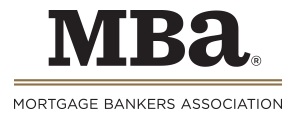WASHINGTON, D.C. – RealEstateRama – Homebuyer affordability declined in February, with the national median payment applied for by purchase applicants increasing 4.9 percent to $2,061 from $1,964 in January. This is according to the Mortgage Bankers Association’s (MBA) Purchase Applications Payment Index (PAPI), which measures how new monthly mortgage payments vary across time – relative to income – using data from MBA’s Weekly Applications Survey (WAS).
“Higher mortgage rates and home prices led to continued erosion in homebuyer affordability in February,” said Edward Seiler, MBA’s Associate Vice President, Housing Economics, and Executive Director, Research Institute for Housing America. “Many prospective homebuyers continue to feel this affordability squeeze, with the typical purchase application loan amount increasing $8,003 over the month to $320,003. Given ongoing economic uncertainty and the likelihood of a recession, MBA expects mortgage rates to decline as this year progresses, which will help affordability.”
An increase in MBA’s PAPI – indicative of declining borrower affordability conditions – means that the mortgage payment to income ratio (PIR) is higher due to increasing application loan amounts, rising mortgage rates, or a decrease in earnings. A decrease in the PAPI – indicative of improving borrower affordability conditions – occurs when loan application amounts decrease, mortgage rates decrease, or earnings increase.
The national PAPI (Figure 1) increased 4.9 percent to 169.7 in February from 161.7 in January. The increase means that the PAPI hit a new record high from its previous series high in October 2022 at 167.2. Compared to February 2022 (143.7), the index is up 18.1 percent. For borrowers applying for lower-payment mortgages (the 25th percentile), the national mortgage payment increased to $1,391 in February from $1,322 in January.
The Builders’ Purchase Application Payment Index (BPAPI) showed that the median mortgage payment for purchase mortgages from MBA’s Builder Application Survey increased to $2,492 in February compared to $2,379 in January.
Additional Key Findings of MBA’s Purchase Applications Payment Index (PAPI) – February 2023
- The national median mortgage payment was $2,061 in February, up from $1,964 in January and from $1,920 in December. It is up $408 from one year ago, equal to a 24.7% increase.
- The national median mortgage payment for FHA loan applicants was $1,707 in February, up from $1,619 in January and from $1,201 in February 2022.
- The national median mortgage payment for conventional loan applicants was $2,117, up from $2,009 in January and from $1,750 in February 2022.
- The top five states with the highest PAPI were: Nevada (251.6), Idaho (249.3), Arizona (225.7), Utah (222.8), and California (217.4).
- The top five states with the lowest PAPI were: Connecticut (111.7), North Dakota (118.2), West Virginia (119.8), Louisiana (121.1), and Vermont (121.6).
- Homebuyer affordability decreased for Black households, with the national PAPI increasing from 161.7 in January to 169.7 in February.
- Homebuyer affordability decreased for Hispanic households, with the national PAPI increasing from 154.6 in January to 162.2 in February.
- Homebuyer affordability decreased for White households, with the national PAPI increasing from 162.9 in January to 170.9 in February.
About MBA’s Purchase Applications Payment Index
The Mortgage Bankers Association’s Purchase Applications Payment Index (PAPI) measures how new mortgage payments vary across time relative to income. Higher index values indicate that the mortgage payment to income ratio (PIR) is higher than in a month where the index is lower. Contrary to other affordability indexes that make multiple assumptions about mortgage underwriting criteria to estimate mortgage payment level, PAPI directly uses MBA’s Weekly Applications Survey (WAS) data to calculate mortgage payments.
PAPI uses usual weekly earnings data from the U.S. Bureau of Labor Statistics’ Current Population Survey (CPS). Usual weekly earnings represent full-time wage and salary earnings before taxes and other deductions and include any overtime pay, commissions, or tips usually received. Note that data are not seasonally adjusted.
MBA’s Builders’ Purchase Application Payment Index (BPAPI) uses MBA’s Builder Application Survey (BAS) data to create an index that measures how new mortgage payments vary across time relative to income, with a focus exclusively on newly built single-family homes. As with PAPI, higher index values indicate that the mortgage payment to income ratio (PIR) is higher than in a month where the index is lower. To create BPAPI, principal and interest payment amounts are deflated by the same earnings series as in PAPI.
The rent data series calculated for MBA’s national mortgage payment to rent ratio (MPRR) comes from the U.S. Census Bureau’s Housing Vacancies and Homeownership (HVS) survey’s median asking rent. The HVS data is quarterly, and as such, the mortgage payment to rent ratio will be updated quarterly. Note: MPPR data is not included in this February 2023 release.
For additional information on MBA’s Purchase Applications Payment Index, click here.
Contact
Falen Taylor
(202) 557-2771


